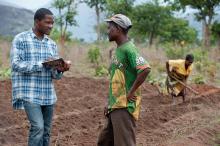Land Library
Welcome to the Land Portal Library. Explore our vast collection of open-access resources (over 74,000) including reports, journal articles, research papers, peer-reviewed publications, legal documents, videos and much more.
/ library resources
Showing items 28 through 36 of 1420....According to the 2016 Climate Risk Index, Myanmar is the second-most-vulnerable country in the world to the effects of climate change.
Internally displaced persons (IDPs) returning to their former villages are being sued for trespass by the Asia World and Shwe Padonmar companies who claim the land was given to them for palm oil plantations…
In Burma, where 70 percent of people earn a living through agriculture, securing land is often equivalent to securing a livelihood.
The present study on Myanmar focuses on customary tenure among upland ethnic
nationalities, where colonial and state land administration systems have been poorly integrated,
allowing customary systems to be sustained over time. Much like under British colonial power, the
Abstract: "Global economic change and policy interventions
are driving transitions from long-fallow swidden (LFS)
systems to alternative land uses in Southeast Asia’s uplands.
This study presents a systematic review of how these
Land and associated property is a major source of individuals’ identity and livelihood.
It is widely accepted among economists and policy-makers that secure and well-defined land property rights are integral to poverty alleviation and economic prosperity. But how do legal systems, land tenure and economic development really relate to one another?
Access to land is key to achieving food security, poverty alleviation, social equity and environmental protection. A brief insight in land governance-related principles and policies of the German development assistance.
Following the end of apartheid, South Africa’s government set itself ambitious goals with a planned land reform. However, there have since been barely any changes in the country’s agricultural structure, and the positive impacts that were hoped for on rural livelihoods have hardly materialised.





